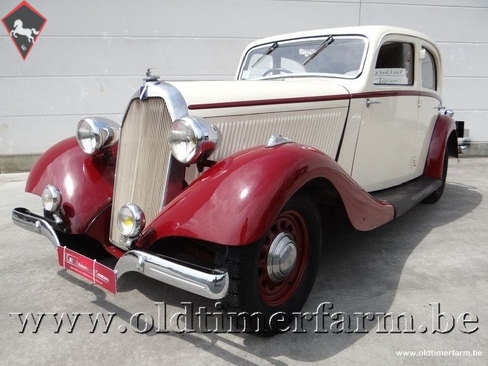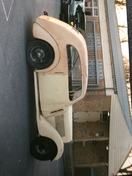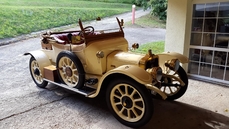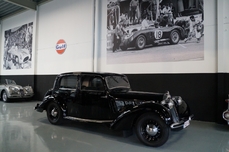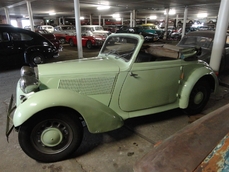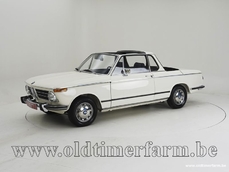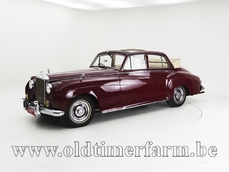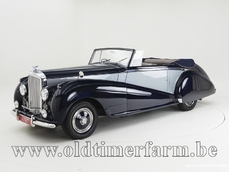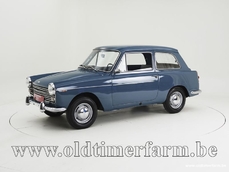Talbot Other T110 '34 1934
General description :
Lowered price from €33.950- €28.950 Chassis nr 83693 Very rare Good condition French papers Talbot was an automobile marque that existed from 1903 to 1992, with a hiatus from 1960 to 1978, under a number of different owners, latterly under Peugeot. Talbot participated in rallying, winning the 1981 World Rally Championship constructors' title, and in Formula One. Talbot was originally the British marque used to sell imported French Clément-Bayard cars. Founded in 1903, this business venture was financed by Charles Chetwynd-Talbot, 20th Earl of Shrewsbury and Adolphe Clément-Bayard. Starting in 1905, the company sold imported cars under the Clément-Talbot marque and began assembling French-made parts at a new factory located in Barlby Road, Ladbroke Grove, North Kensington, London, selling them under the name Talbot. Domestically-designed cars followed from 1906. By 1910, 50 to 60 cars a month were being made. A Talbot was the first car to cover 100 mph (160 km/h), in 1913. During World War I, the firm manufactured ambulances. French and British operations continued in separate, parallel production and marketing processes until 1919, when British-owned but Paris-based Darracq took over the company; Darracq-made Talbots were marketed as Talbot-Darracqs. The following year, Darracq was reorganised as part of the Sunbeam-Talbot-Darracq (STD) conglomerate. In 1916, Swiss native Georges Roesch became chief engineer, and in the 1920s, Talbot built a number of successful models, including the 14/45 hp, or Talbot 105, which was first built in 1926. In the 1930s, Roesch-designed Talbots enjoyed success in racing with the Fox & Nicholl team, their drivers including the Hon. Brian Lewis, Johnny Hindmarsh, and John Cobb (better known for his land speed record attempts). They were also highly successful in the Alpine Trial. In 1935, the STD combine collapsed and the Rootes Group took over Clément-Talbot. For Rootes, immediate sustainability was more important than re-engineering - the existing models were simply rebadged. The French factory was bought by Antonio Lago who used Talbot-Lago as a marque afterwards. In Britain, Sunbeam and Talbot marques were combined in 1938 to form Sunbeam-Talbot. Production of Sunbeam Talbot automobiles ceased during World War II and resumed again in 1946, and the Talbot name was dropped in 1955. The Sunbeam name continued under the Rootes management (Rapier, Alpine and Tiger) until 1967 when control was taken over by Chrysler. After the war, only the French Talbot-Lago continued until 1960. The marque was bought by Simca in 1958. In 1967, Chrysler took over Rootes and merged it with Simca to form Chrysler Europe. The Talbot name was not used in this era, although the Chrysler "Pentastar" logo and name (used as the marque) gradually replaced the Rootes brands as the 1970s progressed. Chrysler had just developed with Simca new Horizon/Omni line, and the Talbot Horizon was produced in Finland at Uusikaupunki factory. Other Chrysler-based Talbots were also made there, Talbot 1510 and Talbot Solara. The top-of-the line model was called Talbot Solara VIP. At the end of 1978, Peugeot took over Chrysler Europe and resurrected the Talbot name — using it to re-badge the former Simca and Rootes models. The Peugeot takeover saw the end of Chrysler Hunter production, but the Chrysler-designed 1510 (Alpine in UK), and Horizon remained in production. All former Chrysler products registered in Britain after 1 August 1979 bore the Talbot badge. The last remaining car produced by the Rootes group, the Chrysler (previously Hillman) Avenger, remained in production as a Talbot until the end of 1981; production also ended, in 1981, of the Avenger-derived Talbot Sunbeam. The entry-level model in the Talbot range from 1982 onwards would be the Talbot Samba, a three-door hatchback based on the Peugeot 104. In 1981, Peugeot began producing the Talbot Tagora, a boxy four-door saloon marketed as a Ford Granada or Vauxhall Carlton/Opel Rekord rival. But it was not popular in either Britain or France and production ceased in 1983. At the end of 1984, the Alpine hatchback and its related Solara saloon were rebadged Minx and Rapier depending upon specification rather than body shape. The new names were inherited from the Rootes Group; Rootes had previously produced the Hillman Minx and Sunbeam Rapier. These cars were produced until 1986. Rootes names still crop up occasionally; there was a Peugeot 605 "Sceptre" model, the right to that name being inherited from the Humber Sceptre. At the end of 1985, Peugeot replaced the Talbot Horizon with the Peugeot 309. Peugeot had originally planned to sell the car as the Talbot Arizona but had now changed its plans and was now intent on phasing out the Talbot marque. Production of the Horizon continued in Spain and Finland until 1987, marking the end of the Talbot name on passengers cars (the rest of the range had been discontinued in May 1986), although the Talbot Express panel van continued in production until 1992.
http://www.oldtimerfarm.be/en/collection-cars-for-sale/4927/talbot-suresnes-t110-34.php
1934 Talbot Other T110 '34 is listed sold on ClassicDigest in Aalter by Oldtimerfarm Dealer for €28950.
Car Facts
Car type : Car Make : Talbot Model : Other Model Version : T110 '34 Engine size : 0.0 Model Year : 1934 Location : Aalter
Sold
Seller Information
Sold
People who viewed this Talbot Other also viewed similar Talbot listed at ClassicDigest
Other cars listed for sale by this dealer
About Talbot
Talbot, a name that resonates with the connoisseurs of automotive history. The tale of Talbot is a tapestry woven with threads of innovation, elegance, and racing pedigree. This marque, with its roots stretching back to the late 19th century, has left an indelible mark on the annals of motoring.Talbot's journey began when Adolphe Clément-Bayard, a French industrialist and cycling enthusiast, acquired the British Darracq company in the early 1900s. This marked the birth of the Clément-Talbot brand, a fusion of French flair and British craftsmanship. The vehicles bore the unmistakable hallmarks of both nations, blending performance with refinement.
In the interwar period, Talbot truly came into its own. It was during this era that the marque produced some of its most exquisite models. The Talbot 105, with its elegant lines and advanced engineering, captured the hearts of discerning motorists. The 105 exemplified the art of pre-war motoring, offering a balanced combination of power and sophistication.
Yet, Talbot's true claim to fame lay in its racing endeavors. The Talbot-Lago Grand Prix cars, with their potent engines and streamlined bodies, were formidable competitors on the European circuits. Talbot-Lago secured victory at prestigious events like the 1949 Le Mans 24 Hours, cementing its place in motorsport history.
After World War II, Talbot ventured into the realm of luxury grand touring cars. The Talbot-Lago T26, in both Record and Grand Sport variants, showcased the brand's commitment to craftsmanship and performance. These magnificent machines featured powerful inline-six engines, sumptuous interiors, and timeless aesthetics.
But as the years rolled on, the winds of change swept through the automotive industry. Financial challenges and shifting market dynamics spelled the end of the road for Talbot. The marque, once a symbol of automotive excellence, eventually faded from the scene.
Today, Talbot's legacy lives on through the admiration of collectors and enthusiasts. The marque's finer models remain coveted treasures, each a testament to an era when elegance and engineering prowess converged. Talbot may be a chapter in the history books, but its story continues to captivate those who appreciate the artistry of motoring.
